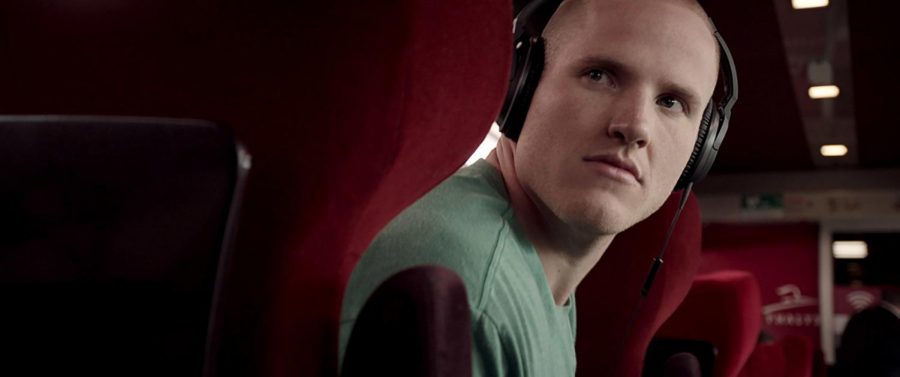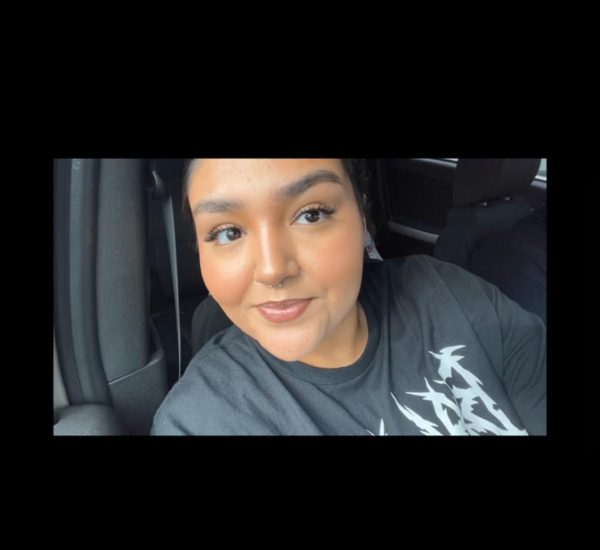Clint Eastwood’s ‘15:17 to Paris’ stars real-life heroes playing themselves
February 6, 2018
In the summer of 2015, three American tourists on a train from Amsterdam to Paris helped take down a lone gunman armed with more than 300 rounds of ammunition. The story of these real-life heroes seemed a natural fit for director Clint Eastwood, coming off the successes of “American Sniper,” starring Bradley Cooper as Navy SEAL Chris Kyle, and “Sully,” featuring Tom Hanks as heroic airline pilot Capt. Chesley Sullengberger. When Eastwood signed on to direct “The 15:17 to Paris” in early 2017, there was one obvious question: Who would he pick to play the three Americans?
The answer: Themselves.
It was an unexpected choice, and surely few were as surprised as the heroes themselves: Anthony Sadler, Alek Skarlatos and Spencer Stone. (Two other men who helped thwart the attack, British national Chris Norman and French-American academic Mark Moogalian, also play themselves in the film.) The three had already been awarded the Legion of Honor medal from French President François Hollande, made the rounds of the late-night shows and spent time around such celebrities as Arnold Schwarzenegger and Kobe Bryant. Making a movie with their longtime hero, Eastwood, however, was a whole different experience.
“We had all his movies, we’d watched them over and over a million times,” says Stone. “Getting over the nerves of meeting someone like him, that’s difficult. But if there’s anything we’ve learned over the past couple of years of meeting all these people, it’s that people are just people.” Adds Stone: “You have one conversation with Clint Eastwood and you realize how cool of a guy he is. He can get down to anyone’s level.”
“The 15:17 to Paris,” opening Friday and based on the trio’s nonfiction book, begins with their early years as middle-school friends (those roles are played by child actors, while two of their mothers are played by Judy Greer and Jenna Fischer). The men play themselves in their early 20s, when Sadler was attending California State University in Sacramento, Skarlatos was in the Oregon National Guard and Stone was serving in the Air Force. The movie depicts them as a close-knit unit, an impression confirmed by their interview by phone from Los Angeles earlier this month. The trio insisted on being interviewed together, and each seemed comfortable speaking for the others. They used the words “we” and “us” far more than the word “I.”
“We hope that people take away just how ordinary we are,” Sadler says of the movie. “There isn’t some special trait the three of us have. We were just put in a crazy situation.”
Sadler, Skarlatos and Stone first met their future director in June 2016, when he presented them with a Hero Award at Spike TV’s annual Guys Choice ceremony. (Eastwood declined to speak for this story.) While chatting offstage, Eastwood agreed to read their upcoming book.
“We kind of kind of jokingly said, ‘Ha, ha, we would love it if you’d turn this into a film,’ “ Sadler recalls. “And he said, ‘You never know.’ “ Stone sent Eastwood a galley copy of the book, and Eastwood called back to say he wanted to make the movie — and soon. “He said he was working on something else,” says Sadler, “but he’d put that one on hold and work on ours.”
According to Skarlatos, Eastwood flew the trio to Los Angeles about three weeks before filming was scheduled to begin. Initially, they assumed it was to meet the actors who would play them. Even when Eastwood asked them to re-enact the train attack — rather like an audition — they assumed it was to nail down details for the actors. Finally Eastwood made himself clear: Would Sadler, Skarlatos and Stone be interested in playing themselves?
“So we kind of went with that for a while. But when we left the room, the reality set in,” says Skarlatos. “Obviously, the conflict was: We could have actors do it, and know that it would be a good movie. Or we could do it, and risk it. In the end, we decided: How could you say no to Clint Eastwood? It was too fascinating of an opportunity to turn down.”
Their first thought, naturally, was to take acting classes. Eastwood forbade it.
“He wanted that dynamic of us being ordinary on camera,” says Sadler. “And that’s what we did. He said, ‘Just be yourselves and I’ll take care of the rest.’ “
Skarlatos says he learned to relax and enjoy himself almost immediately. On his first day, he recalls, he filmed a scene in Afghanistan that required him to rummage through a Humvee filled with rucksacks. Eastwood, he says, was hanging off the side of a vehicle to guide him through the scene. “And he was making all these faces and hand motions to get more energy out of me,” Skarlatos says. “And it was all I could do to keep from laughing. I mean, just the whole idea that I had Clint Eastwood hanging off of a Humvee making faces at me! And from that day on, everything just became a lot of fun.”
And what about filming the climactic train attack? It was a particularly demanding sequence for Stone, who had to re-enact his struggle with the alleged attacker, Ayoub El Khazzani (played by Ray Corasani), and his efforts to save Magoolian, who had been shot while struggling with El Khazzani and was bleeding profusely. (Magoolian’s panicked wife, Isabelle Risacher Moogalian, also plays herself.)
“People probably think it was a very traumatic thing for us,” says Stone, “but honestly, this whole thing has turned into a positive thing in our lives. And what’s unique about our story is that no one died — not even the terrorist. So that makes things easier for everybody.”
He adds, “It was like a big reunion, and it was great to act everything out again.”
Sadler, Skarlatos and Stone all say they now plan to pursue acting full time. “It was the funnest two months of my life,” says Stone. “It would be kind of cool to do another role besides myself, and see if I could step into the shoes of a different person. The whole idea of that is fascinating.”
———
NONACTORS CAN ACT
Movies with nonactors in crucial roles are often a little arty or obscure, but several have managed to make their way to the Academy Awards. Here are five examples:
THE BEST YEARS OF OUR LIVES (1946) William Wyler’s acclaimed drama cast Harold Russell, a former Army instructor whose hands were blown off in a training exercise, as a war veteran struggling with his prosthetic hooks. Of the film’s nine Oscars, two went to Russell: an honorary award for “bringing hope and courage to his fellow veterans” and the competitive supporting actor award. Russell, who died in 2002, remains the only person to win two Oscars for the same performance.
BICYCLE THIEVES (1948) Also known in the United States as “The Bicycle Thief,” this Italian film follows a poor father and his young son as they scour Rome for the stolen bicycle that provides their only source of income. For his two leads, director Vittorio De Sica cast a factory worker, Lamberto Maggiorani, and an 8-year-old flower-seller, Enzo Staiola. “Bicycle Thieves” won an honorary Oscar for best foreign language film and is still often cited as one of the greatest films ever made.
THE KILLING FIELDS (1984) Roland Joffe’s drama tells the story of two journalists, Cambodian Dith Pran, who survived years of starvation and torture under the Khmer Rouge regime, and American Sydney Schanberg, who worked to locate him. The man who played Pran, Haing S. Ngor, was not an actor but a former doctor who had a similar horror story. “This unbelievable,” Ngor said while accepting his Oscar for supporting actor, “but so is my entire life.”
BEASTS OF THE SOUTHERN WILD (2012) This independent film about a man and his daughter living in a poor neighborhood of New Orleans cast two locals in the lead roles: Dwight Henry, a bakery owner who spotted a casting flyer in his shop, and 5-year-old Quvenzhané Wallis, who fibbed about her age to the filmmakers (they wanted 6-year-olds). Thanks to her beaming smile and buzzing energy, Wallis stole the show and became the youngest-ever Oscar nominee.
THE FLORIDA PROJECT (2017) After casting two transgender first-time actresses in 2015’s “Tangerine,” filmmaker Sean Baker again turned mostly to nonprofessionals for this film about poor families living in Central Florida. Baker found Bria Vinaite, who plays a young mother, on Instagram; he found 6-year-old Valeria Cotto at a local Target store. Willem Dafoe — not exactly a first-timer — played a motel manager in the film and earned an Oscar nomination for supporting actor.
— RAFER GUZMÁN
———
©2018 Newsday
Visit Newsday at www.newsday.com
Distributed by Tribune Content Agency, LLC.
—————
PHOTO (for help with images, contact 312-222-4194):
















